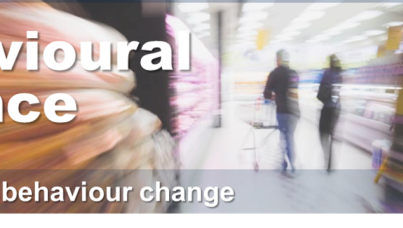Know your (and their) Vices
It’s very aptly said that, ‘If you didn't do anything that wasn't good for you it would be a very dull life…’
Also, it is said that one man’s meat is another man’s poison.
Well, vices have their own charm and each one of us, our own preferred corruptions.
We are identifying the implications of some of these vices – old and new – for marketers and manufacturers, considering consumers’ evolving perceptions and outlook to enable them to not only protect their turf but also their brands need to evolve to be relevant to altering perceptions and choices of consumers.
Vices or Entitlements?
The plethora of small guilty pleasures to choose from, has never been greater than today – what we are referring to is everything spanning from your humble and ubiquitously present chocolates to the much talked about but banned (in India) marijuana and lots of things in between. Consumers, all of us, are expectedly, notoriously two-faced. Many of these are vices when we look at them from a society at large but comfortably justify many of them as entitlements for ourselves.
While all of these satisfy some or the other human need and a range of human emotions, the vice spectrum itself has evolved much with widespread access to consumer packaged goods, digitization & IOT. So, while we still have the traditional vicesà alcohol, cigarettes and drugs, there is a whole new world of emerging, digital vices – online games (some violent), online dating and social media.
And yes, while RTE/D (ready to eat/ drink) consumables like chocolates, salty snacks & sugary drinks have been around for a long time, the reach of these not-so-good-for-you, guilty treats has now reached all nooks and corners of our developing population.
Starting off with the traditional vices, India has never been unfamiliar with these. All of these ‘evils’ find enough mentions in most of our ancient scriptures/ literature and consumption by the Gods. And yet for ages now, we have heard people wax eloquent on the evils of drinking, gambling and smoking.
The higher a particular habit on the Vice quotient, the higher the guilt of consumption. The age-old vices find the highest reservations on this spectrum. Consumption, though, is not necessarily plummeting.
As seen in the survey, Indians continue to be most perturbed by traditional vices and which is where our moral acceptability indices are much lower than the global norm.
Chart 1
The Darkest Vices and the Silver Linings
In a recently conducted global survey*by Ipsos, we see that while India’s (moral) acceptability of liquor is one of the lowest (31%) in the world, the acceptability of the “softer” alcoholic drinks like beer and wine is relatively higher at 44% and 41% respectively. (See Chart 1)
Also, 62% Indians believe that the consumption of liquor, wine and beer, shall be even higher 10 years hence. (Much higher than the global perception of increase in consumption in the future) Not only that, they also believe that the variety available will be much more too. (See Chart 2) This points to an acceptance (maybe, grudging for some of the more moralistic amongst us) that some of these “vices” are here to stay, and grow.
Chart 2
As we witness this spurt of growth and acceptability in alcohol and alco-bevs in India with growing young population, higher disposable incomes among the upper middle class and enhanced global exposure – marketers have reason to rejoice. But an approach which essentially embeds empathy with consumers, will help.
The potential of ‘lighter’ alcohol, no-alcohol beers & lighter RTD alco-bevs is clear. Layering this with the right messaging of ‘not-so-bad’ as liquor or good for social consumption and other human motivations like ‘helping you relax’, which human mind associates with ‘security’, will further help drive the category while still giving socially acceptable and relevant corporate messaging.
A brand like BIRA’s (an indigenous home-grown brand) growth, possibly only scratches the surface of the potential in this market. Interestingly, one of its successful initial launches was Bira White, against the grain of past successes which have mostly been in the Strong beer/ higher kick space. “White” (subliminally) connotes lighter and thus manages to connote less harmful and more acceptable.
The Cigarettes category is degrowing globally. In India too, it is another one of the traditional vices which is much deplored. Again, if one sees the pattern in the recent past, offers which are using “white filters”, or offering flavor infused cigarettes (mint the most popular) are increasingly finding higher acceptance than the traditional “brown filter, hard smoke, brawn masculinity” offers. Increasingly, even with an almost ubiquitous acceptance of its detrimental effects on health, it’s the offers which allow consumers to manage their own perceptions of guilt and adverse judgement by peers and society at large, that will find more favor than traditional offers. To that end, “white” again connotes milder; flavors help manage the unpleasant aftertaste and smell, and mitigate the stretching of the guilty pleasure moment.
The Lesser of the Vices
India’s packaged foods market has been growing consistently over the last few years. Revenue in the Snack Food segment amounts to US$5,254m in 2019 and the market is expected to grow annually by 7.5% (CAGR 2019-2023). With this rate and Indians’ high acceptability of ‘not-so-good-for you’ snacking options, this industry will continue to be among the least affected by “Vice perceptions”.
However, as more and more of us realize the evils of ‘sugar’, ‘high salt’, ‘white flour’, ‘caffeine’, ‘fried’ and ‘carbonation’, the need is for corporate India to recognize and stay with the consumer on their journey towards a guilt-free existence.
Most FMCG majors’ R &D facilities have been relentlessly trying to experiment with foods with lesser of the above ingredients or finding good- for-you, natural substitutes. So, non-potato, baked not fried, preservative free, gluten free, cold-pressed, ‘darker’ chocolates are all slowly becoming extremely relevant to niche segments in our population.
Even Cadbury’s Dairy Milk, India’s largest and much loved chocolate brand and with a high share of India’s Sweet Tooth driven consumption, has taken cognition of these trends and launched Dark Milk.
In the new decade, taking cognition of some of these will be imperative for future growth with GOI also coming out with taxes on ‘high sugar’ | tax exemptions on ‘natural’. Our neighbor Sri Lanka has already introduced the sugar tax last year and the F and B industry has witnessed some tremors due to the same.
The Emerging Vices
When it comes to the emerging or digitally influenced vices, Indians do not seem to recognize the risk thereof, as much. Interestingly, social media emerges as the only category where India’s acceptability is higher than the global average!
The realization however, of how people are losing out on more human interactions and real socializing is coming home to many, even in India. With the generation alpha growing into users of digital & social media in the coming decade, the need to cut-down on screen time will see action rather than just lip-service.
For now, marketers can surely use ‘digital’ much more effectively to micro-target and reach their bull’s eye TG. The media budget allocations need to make a ‘real’ move from everything TV to the Instagrams of the world.
For businesses increasingly reliant on the time spent by consumers on screen, it will be important to offer apps which alert users on high screen time, prompt breaks and promote down time. These are the brands which are likely to be seen by consumers as more humane and acceptable to adopt.
So, as we enter this new decade and virtually everything stands a chance to be termed a vice – what with cow’s milk & even flushing the toilet being questioned – marketers need to steer their brands most cautiously by tapping into deeper human motivations that connect their brand & the consumer, to avoid these vice-y pitfalls.
Chart 3
The findings come from surveys conducted between November 26 and December 7, 2018 on the Ipsos global advisor platform using the Ipsos online panel system with 18,638 adults across 29 countries: Argentina, Australia, Belgium, Brazil, Canada, Chile, China, Colombia, France, Germany, Great Britain, Hungary, India, Italy, Japan, Malaysia, Mexico, Peru, Poland, Romania, Russia, Saudi Arabia, Serbia, South Africa, South Korea, Spain, Sweden, Turkey, and the U.S.






